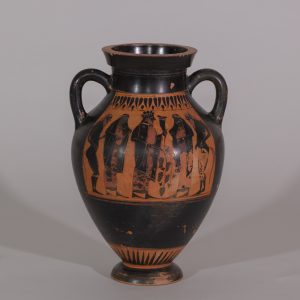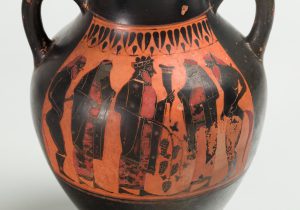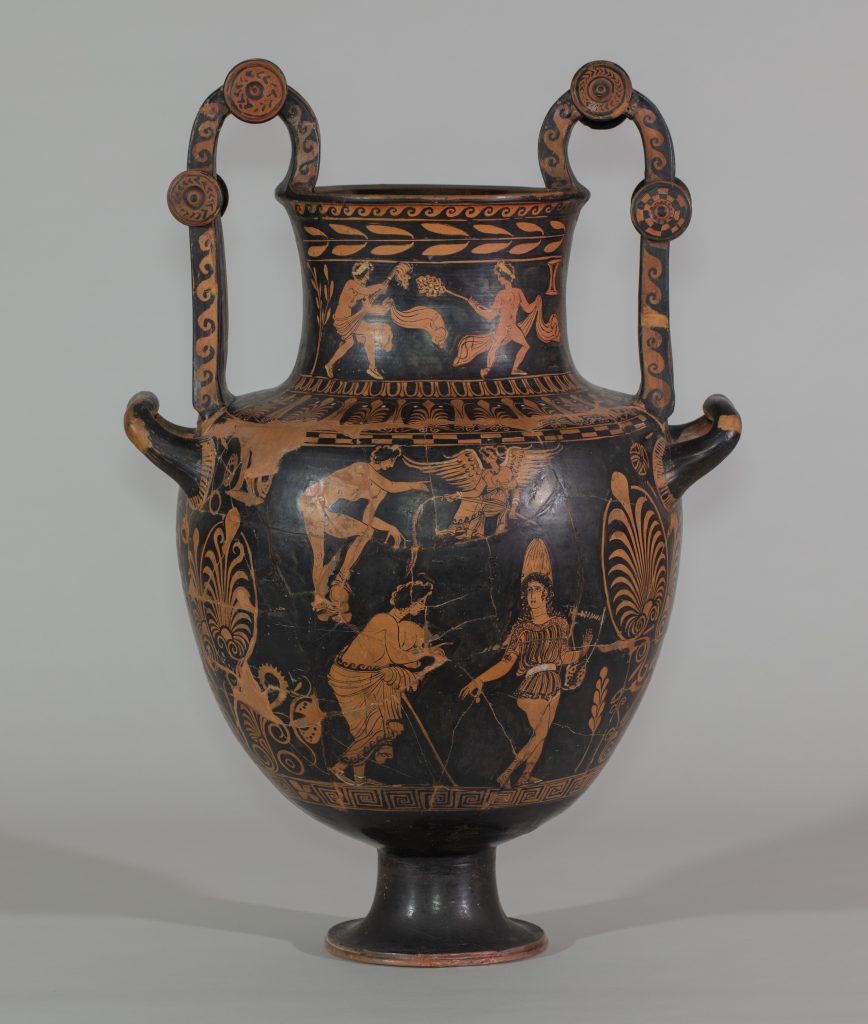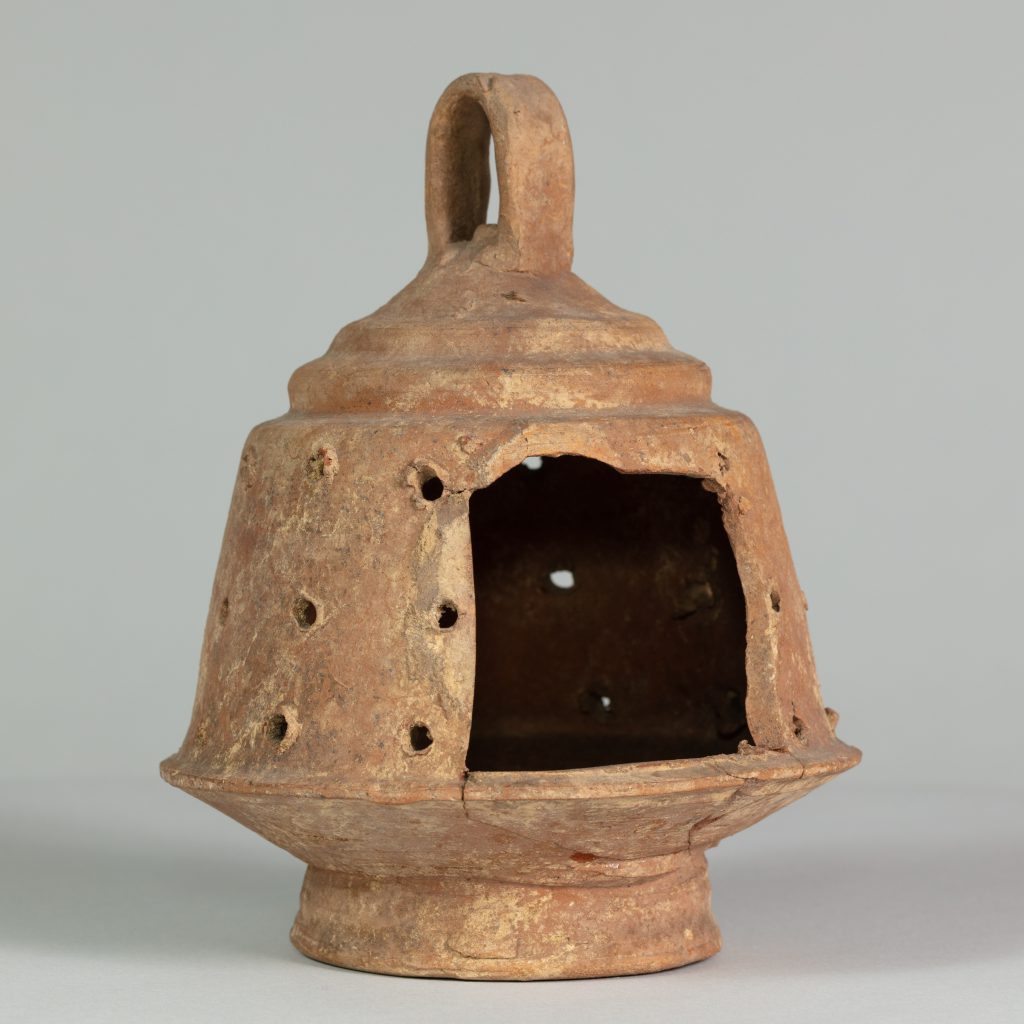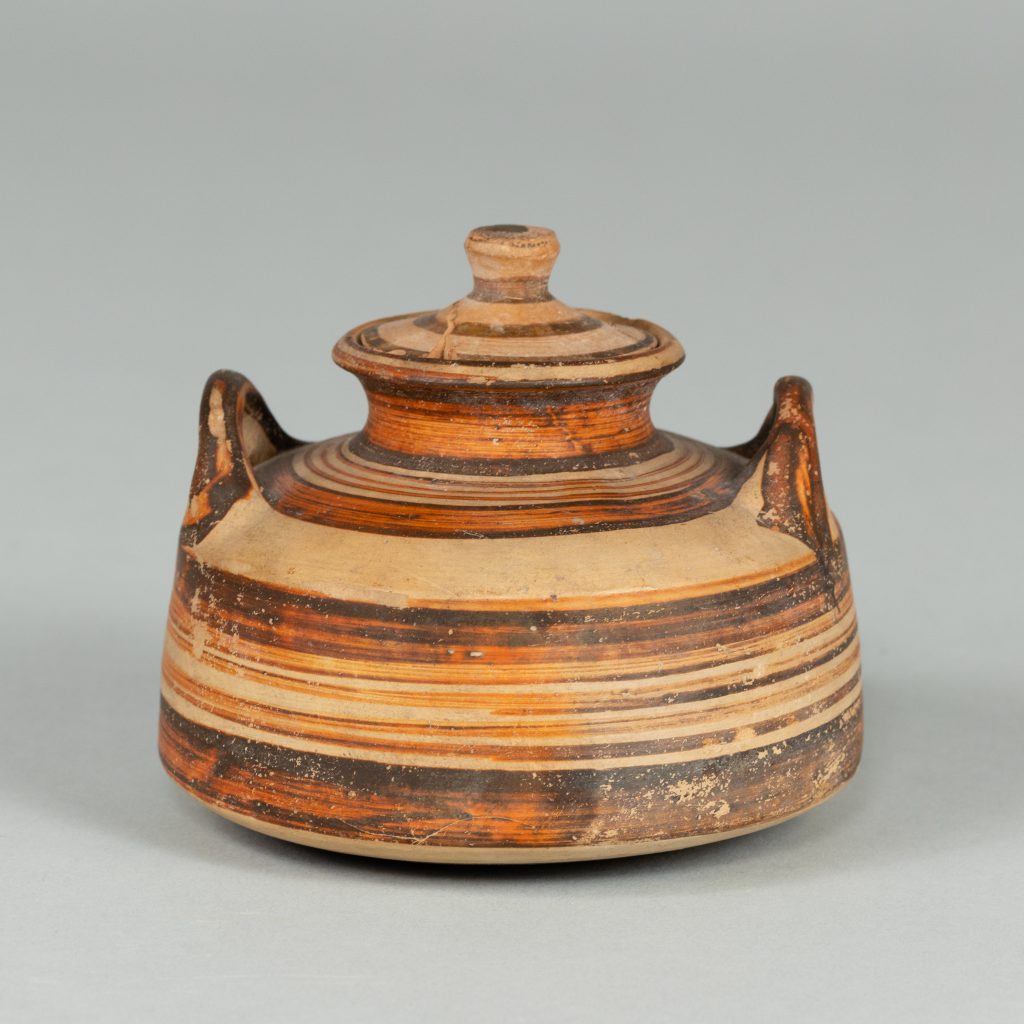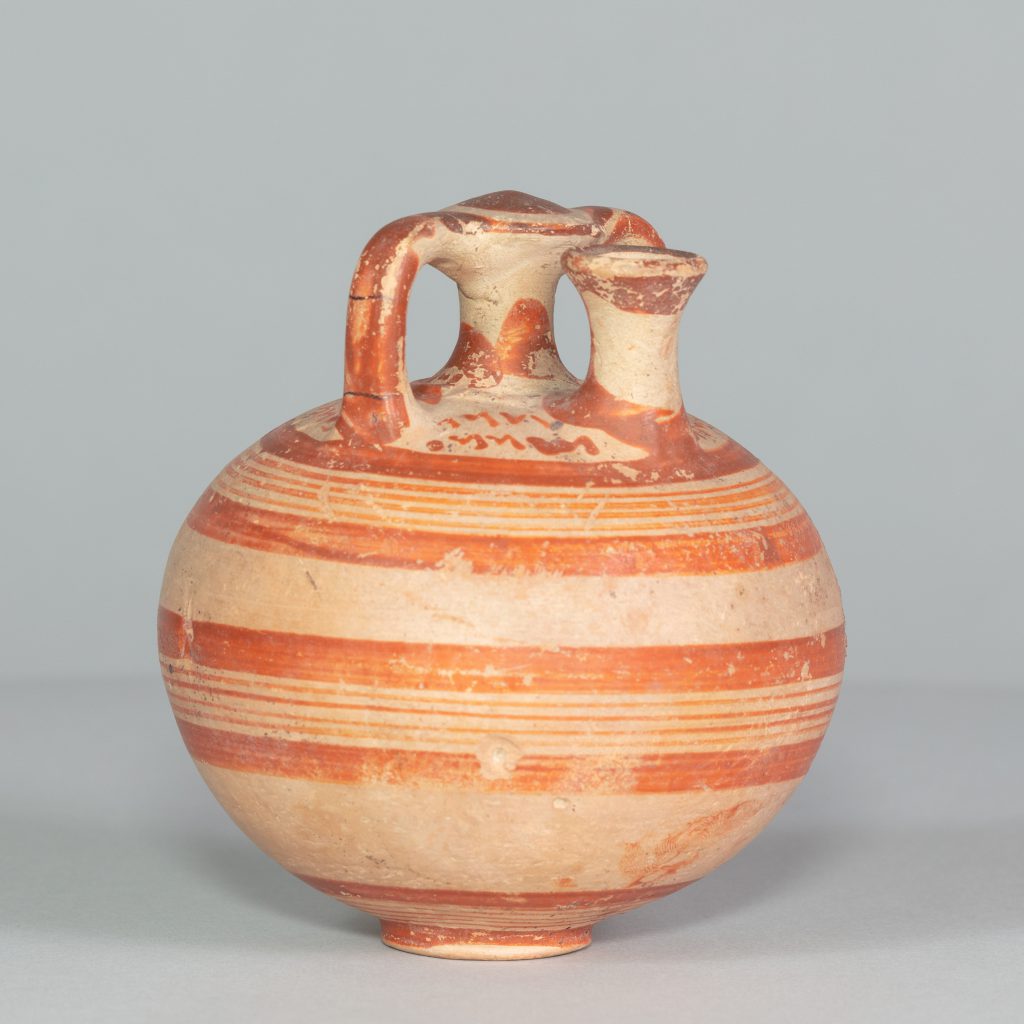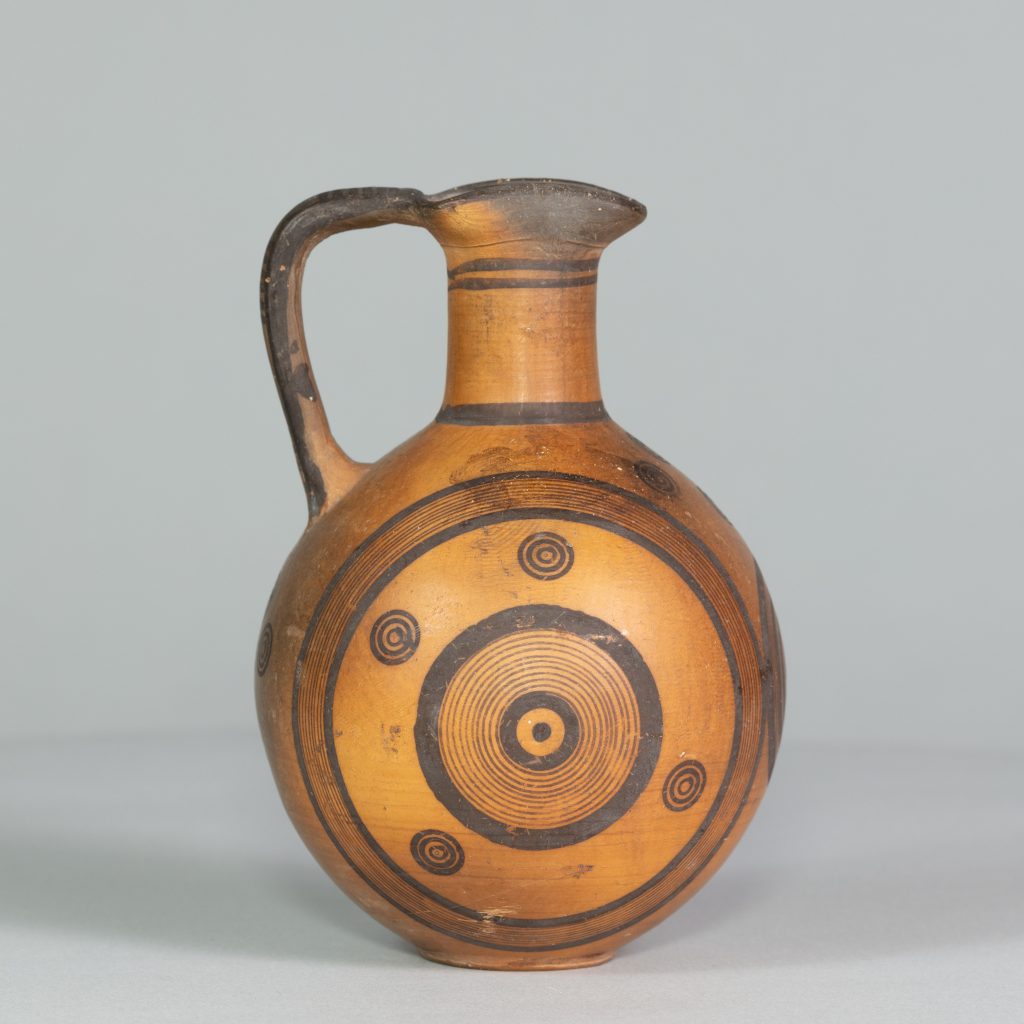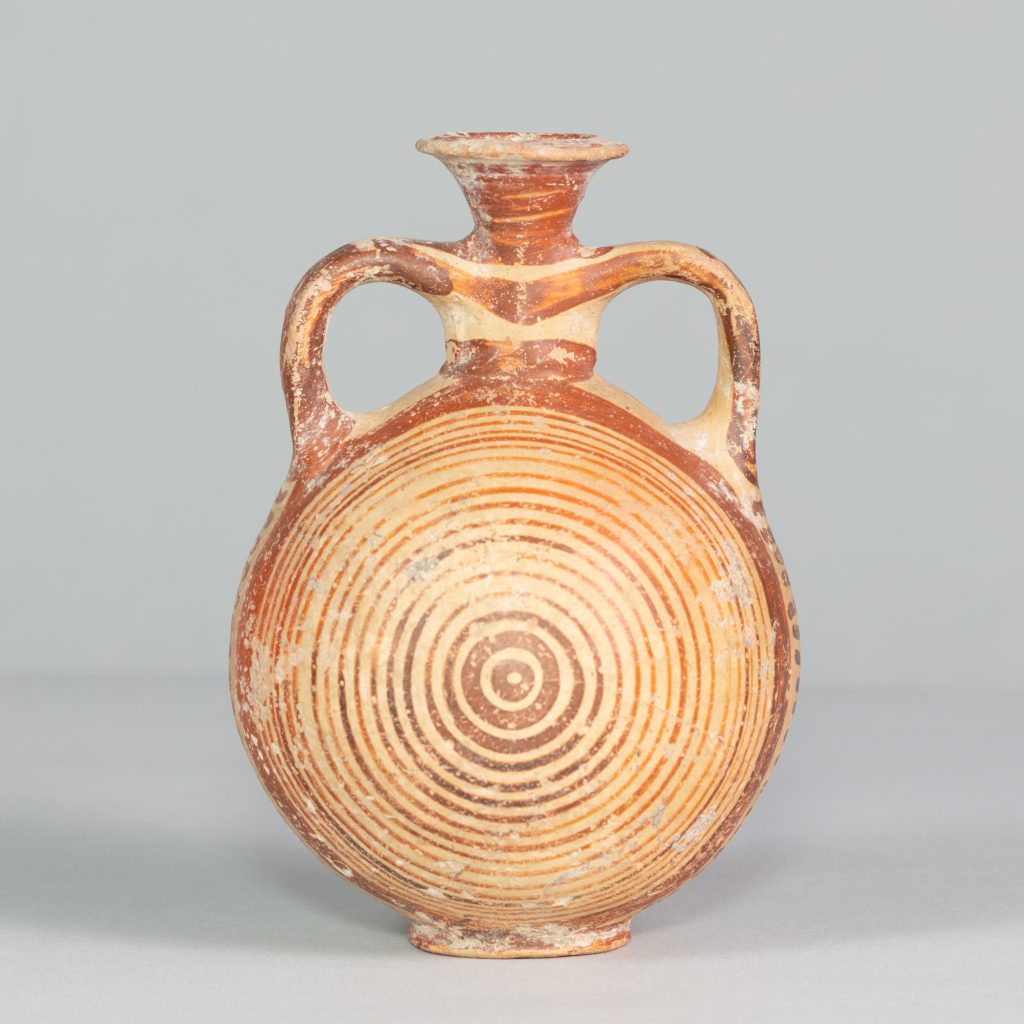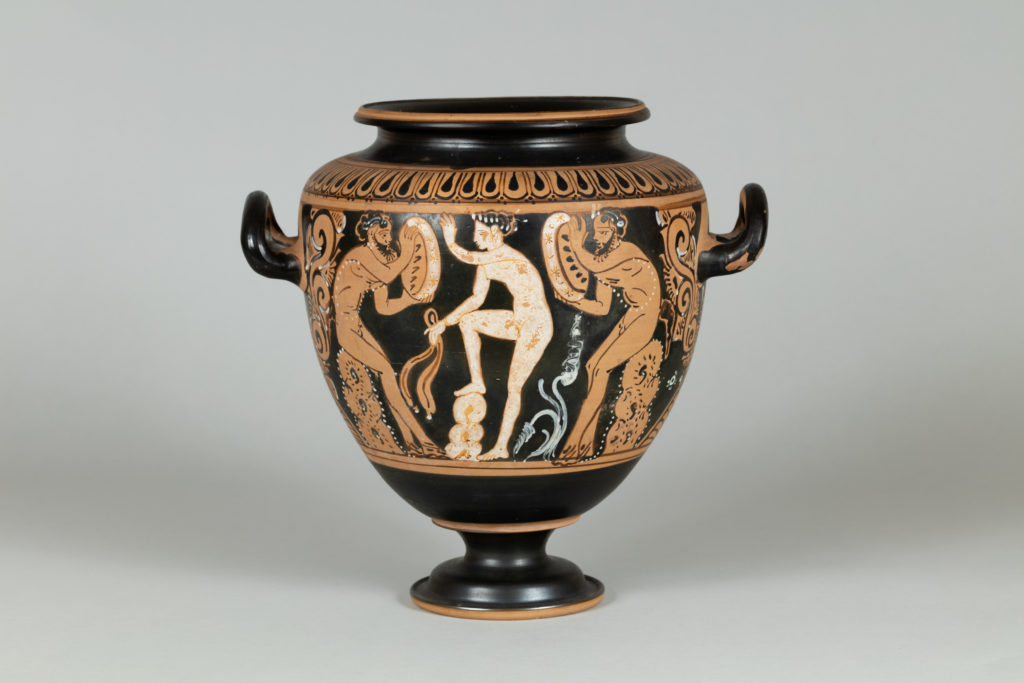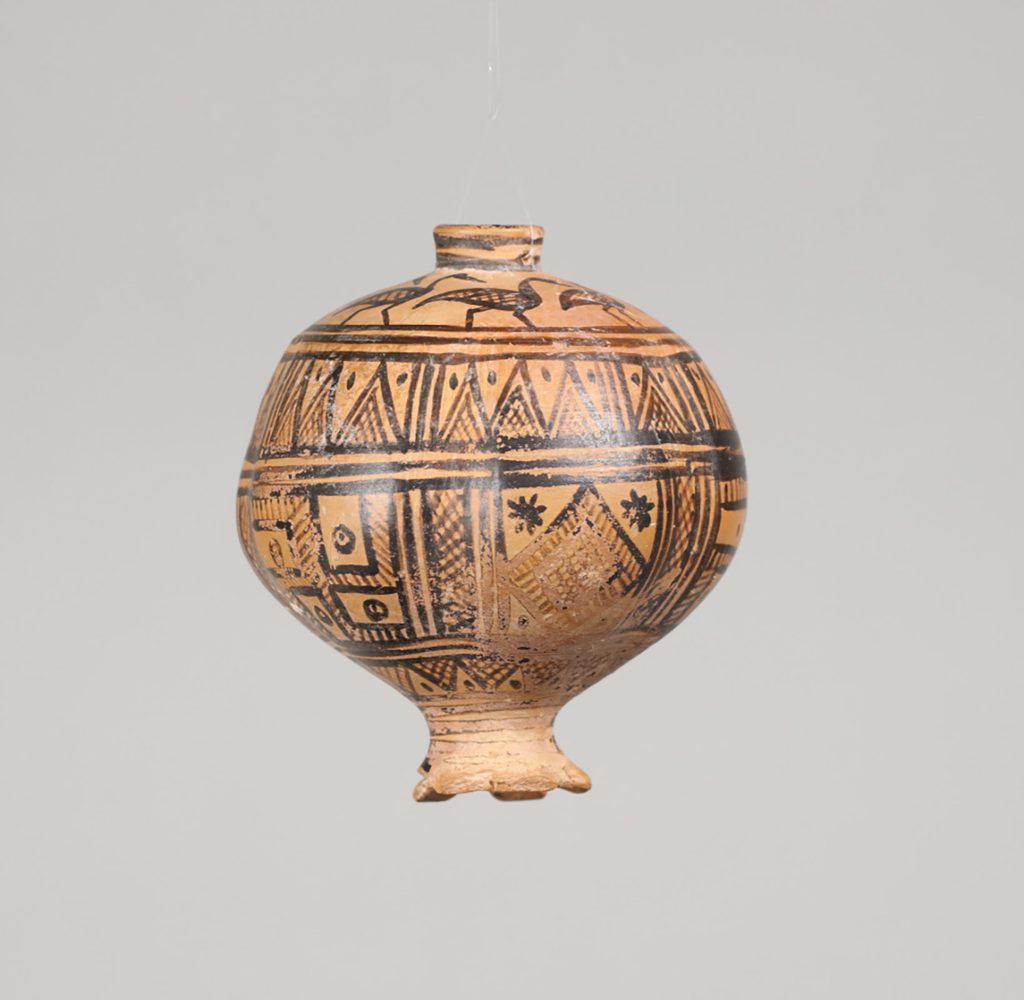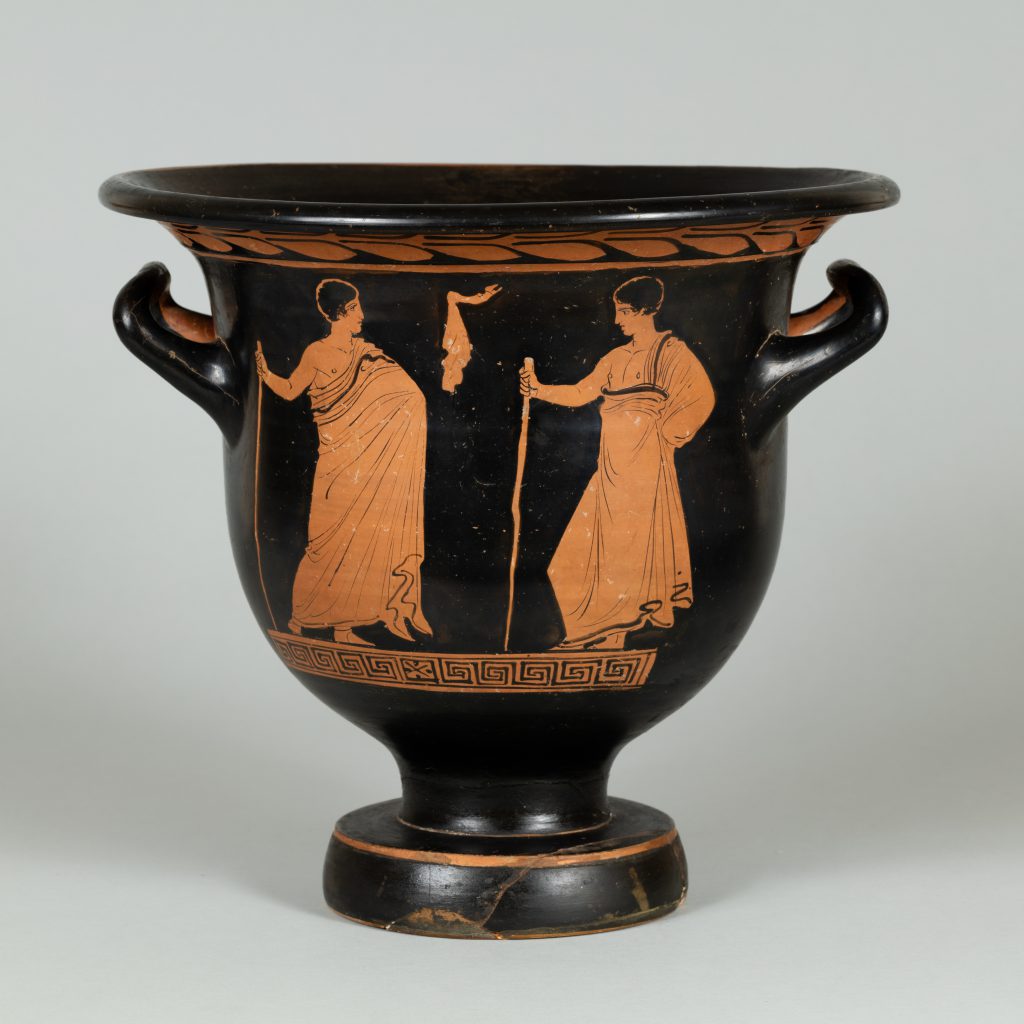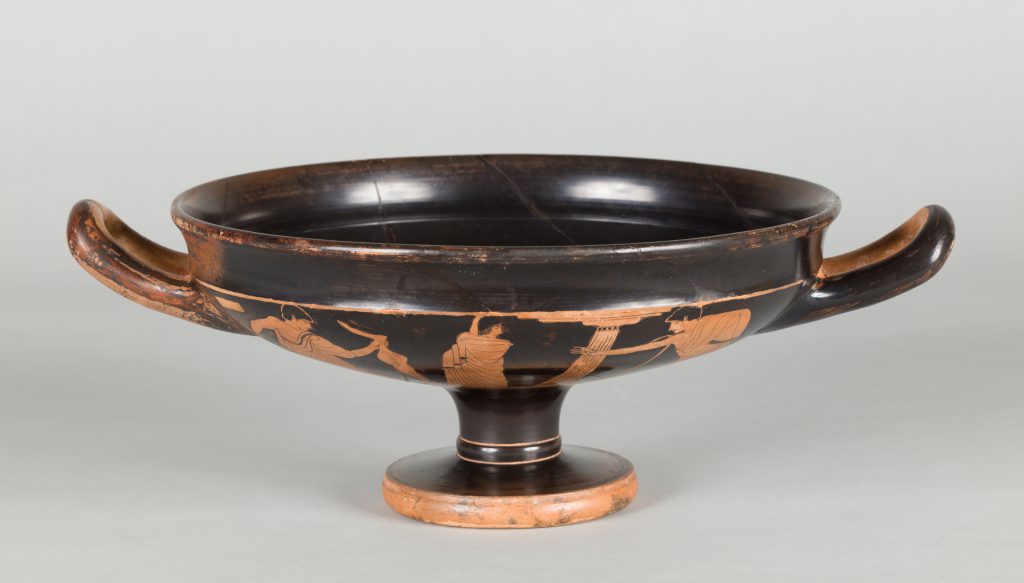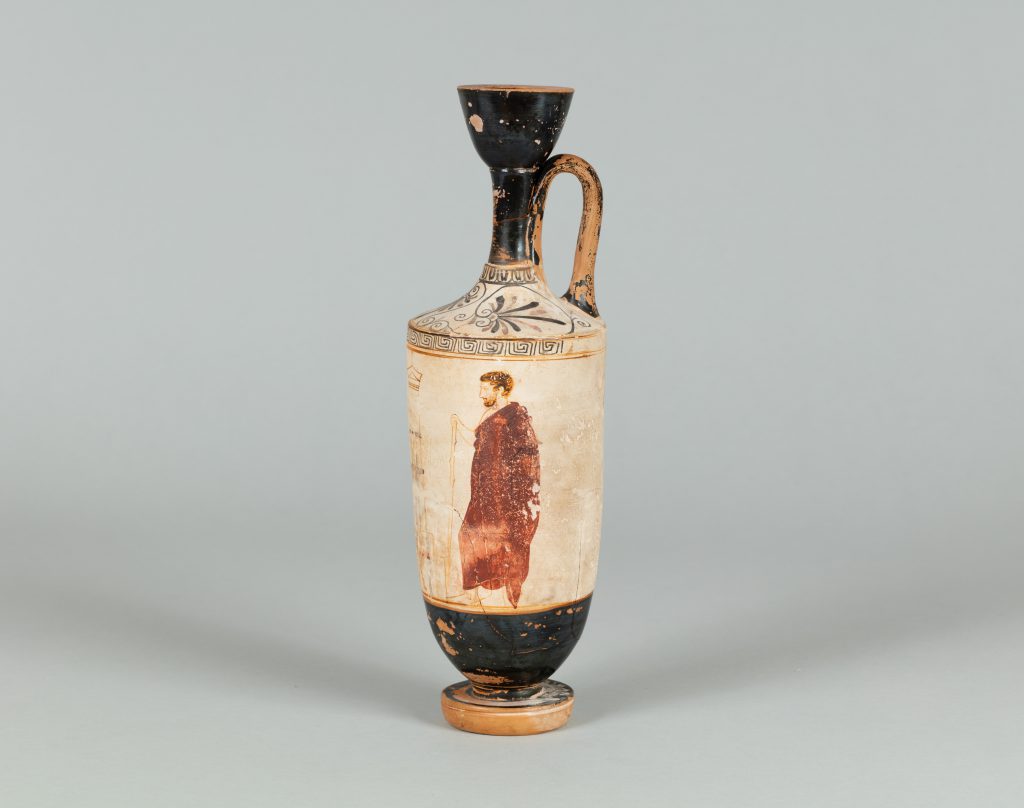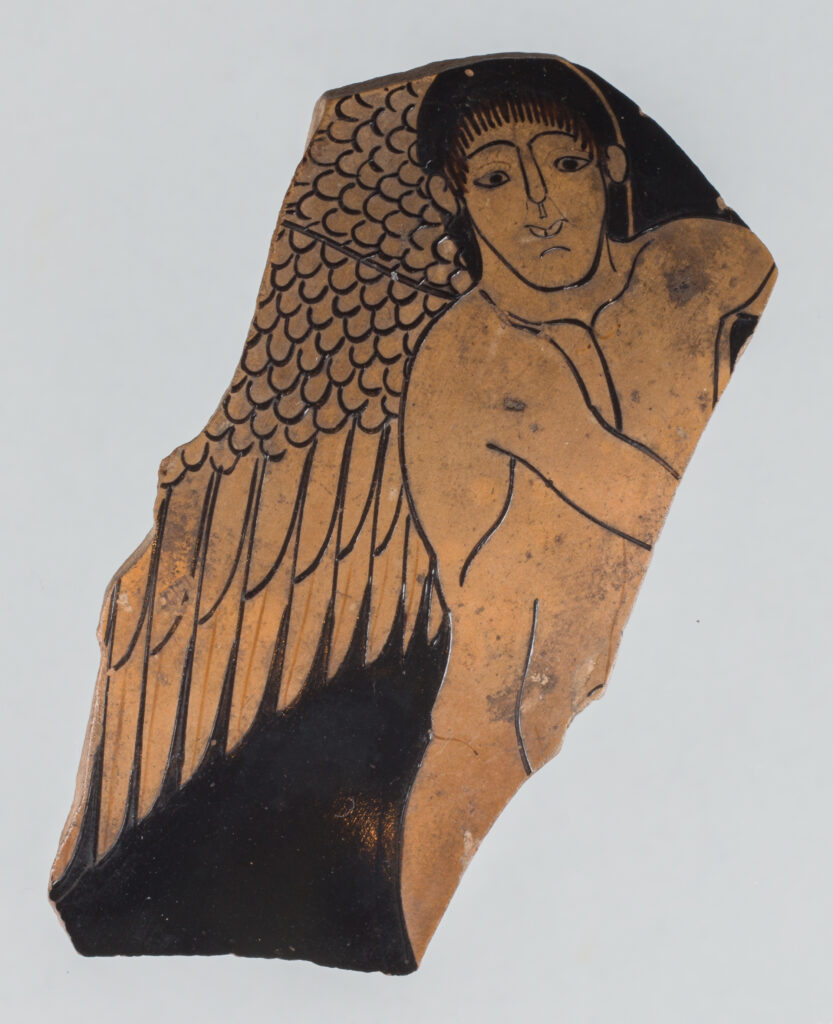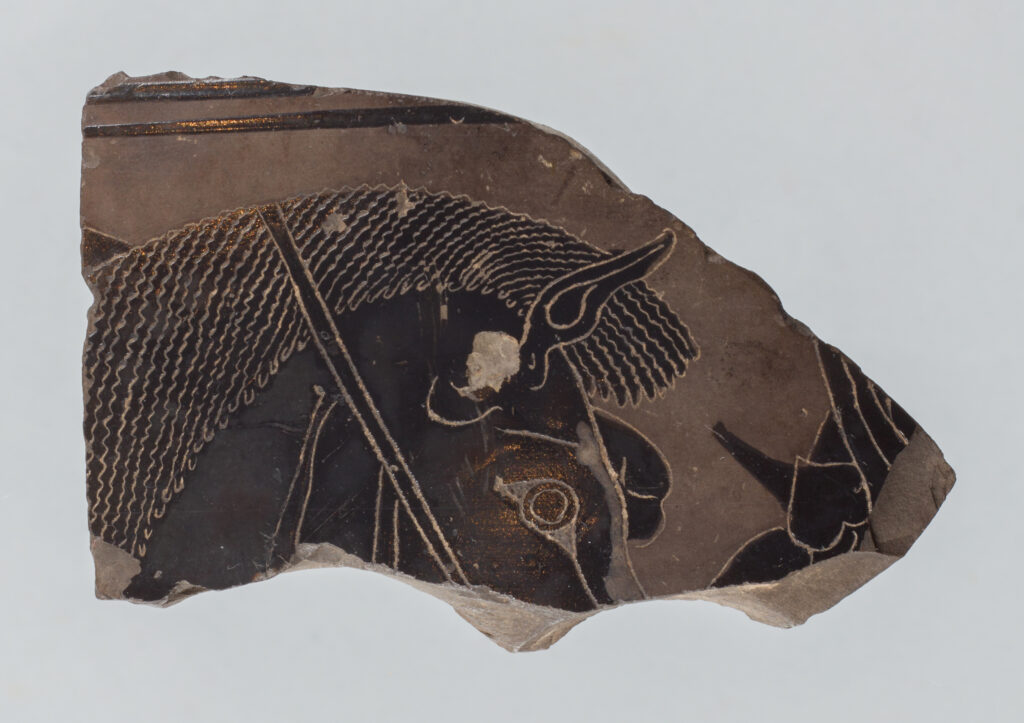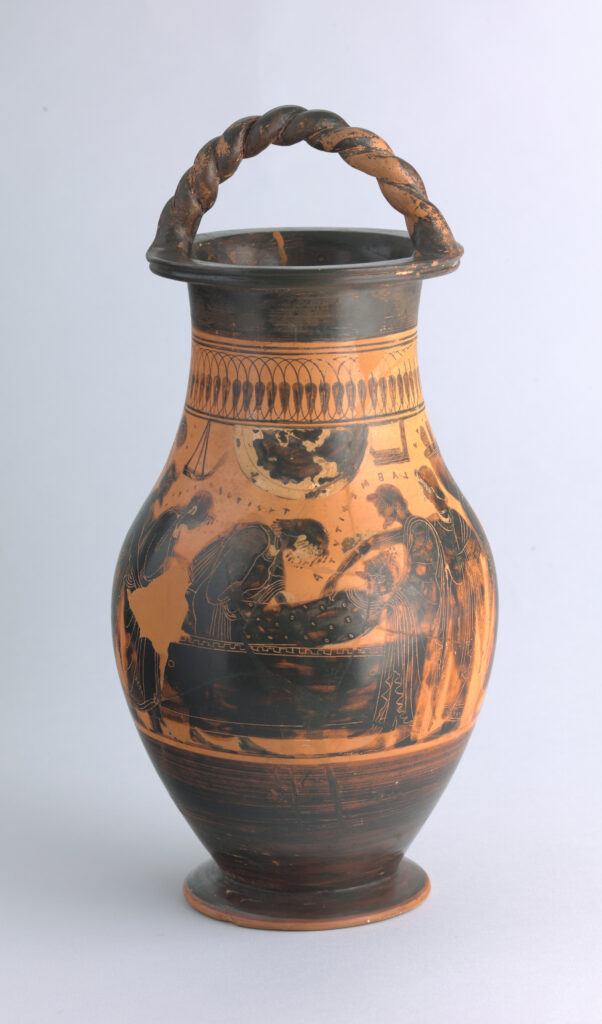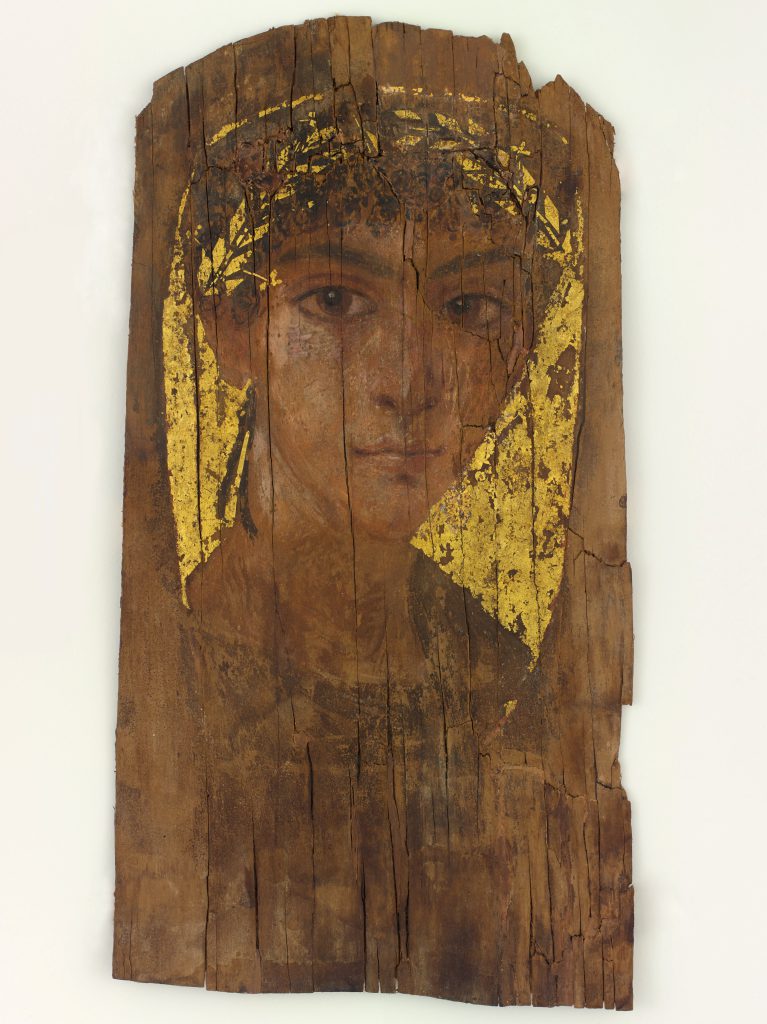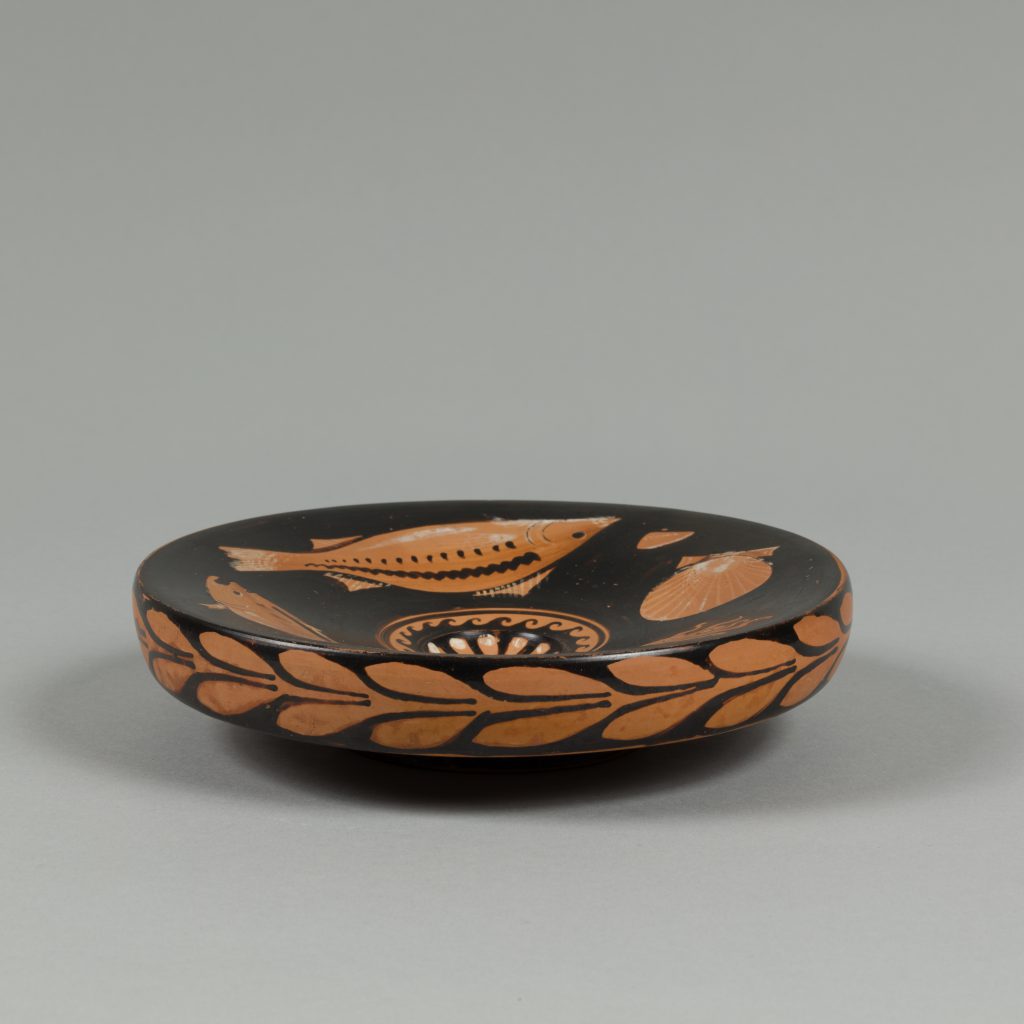
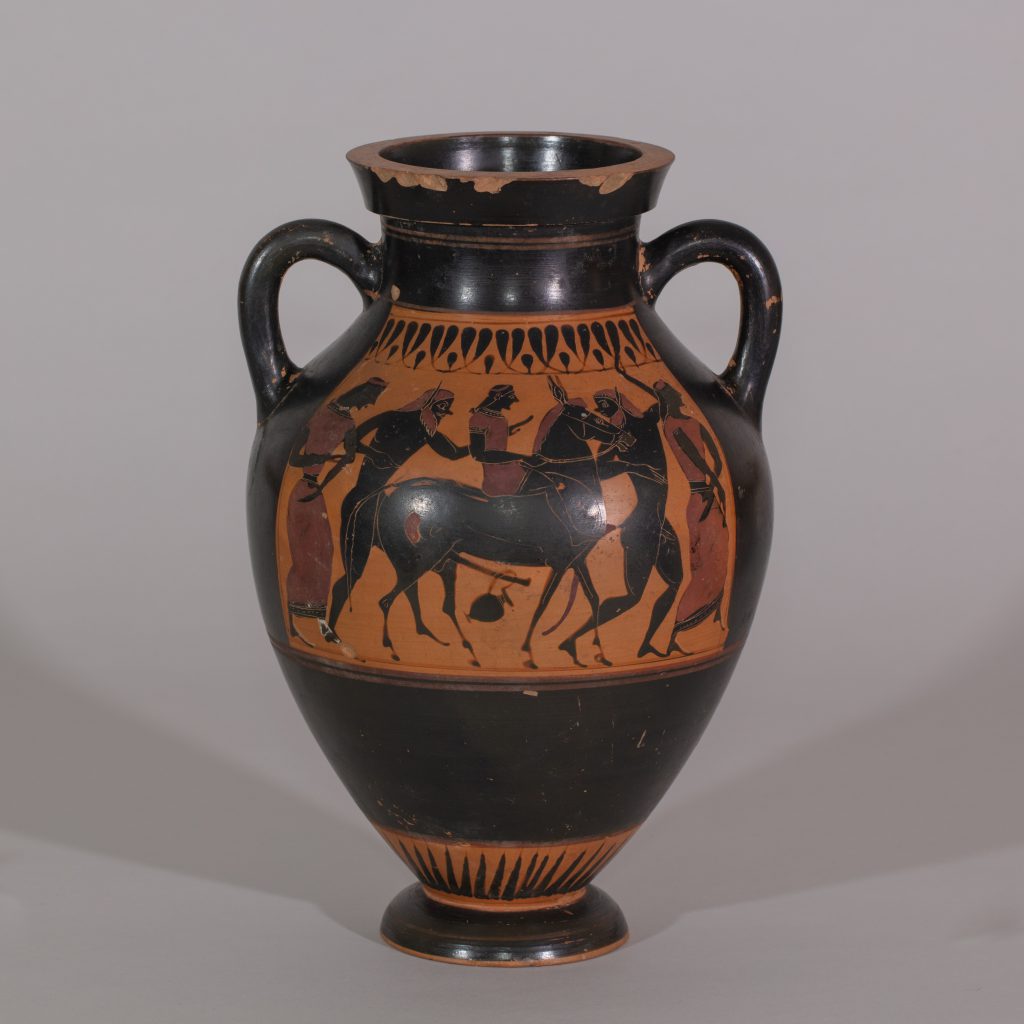

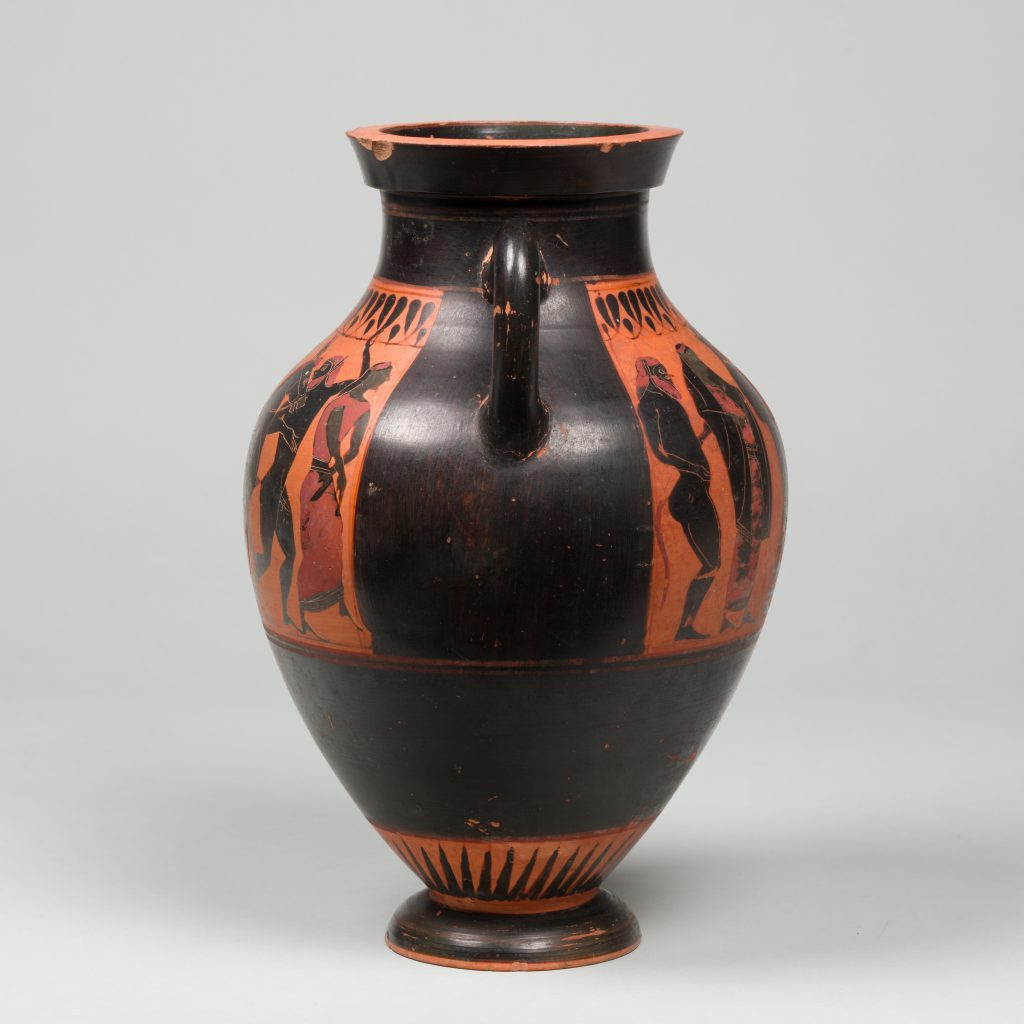


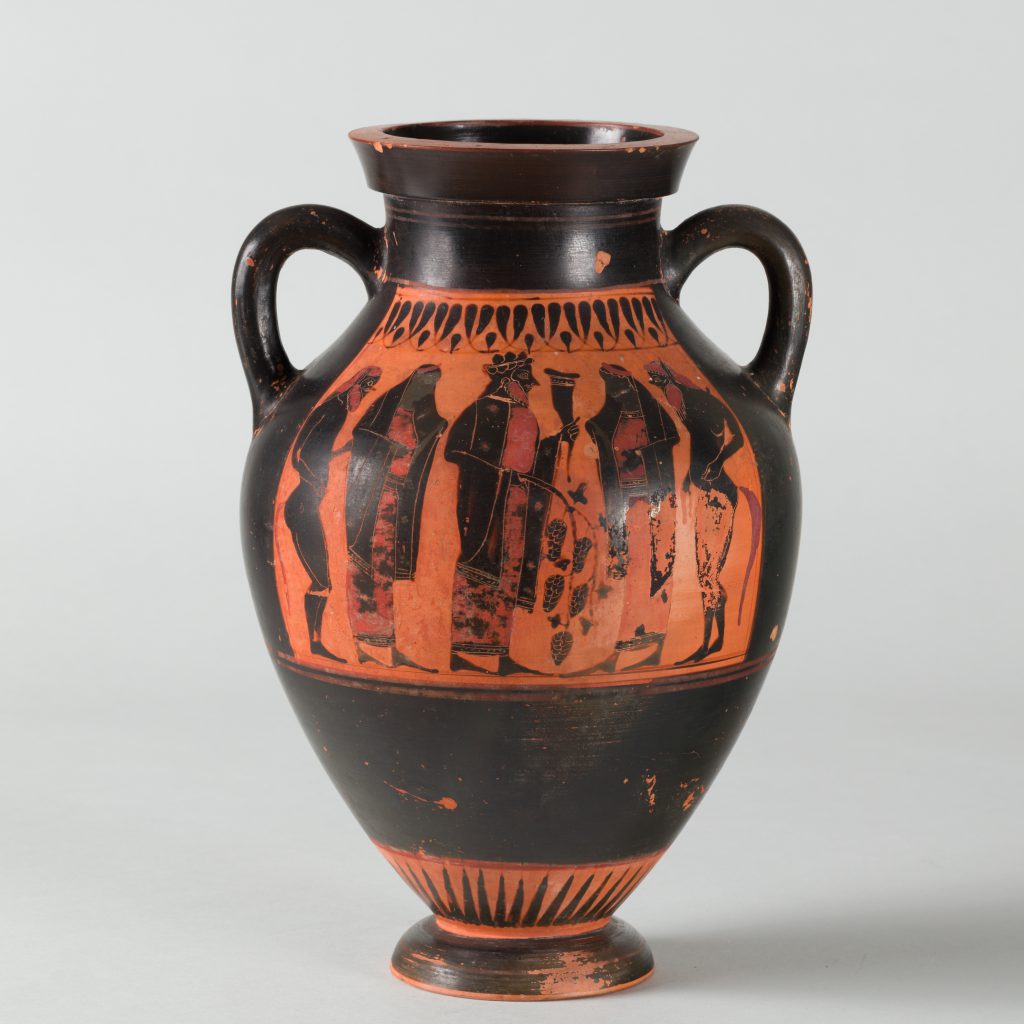
Gift of Edward Perry Warren, Esq., Honorary Degree 1926
1915.44This amphora, a type of ceramic vessel used for storing liquids, especially wine, was painted in the latter half of the sixth century BCE by a vase painter working in Athens. Known as the Painter of Berlin 1686, after his namesake vessel in the Staatliche Museum in Berlin, the artisan worked in the black-figure technique and favored humorous and bawdy scenes. The amphora panel features Dionysus, the god of wine and revelry, crowned with ivy and holding a rhyton (drinking horn) and a vine of ripe grapes. He is attended on either side by a duo of satyrs and maenads, the mischievous and often inebriated woodland creatures and female followers that form his traditional retinue. The opposite panel features a young man riding a mule, accompanied by a group of satyrs and maenads. This narrative scene likely depicts the return of Hephaistos to Olympus. In Greek myth, the Olympian Hephaistos was brought back to Mount Olympus by Dionysus on the back of a mule, on account of his lame foot.
With a complex and comic iconography, this amphora most likely encouraged prolonged engagement for the male audience of the Greek symposium, as it continues to do for the contemporary viewer. As it provides opportunities for studying the development of vase painting, this object would have attracted Warren for its educational value as well as its associations with the leisure culture of the ancient Mediterranean. In this example, a particularly ribald note is struck by the mule’s erect phallus, which supports an oinochoe, a type of jug used to serve wine during the symposium. This detail embodies principal aspects of the symposium’s celebratory all-male camaraderie by appealing to its primary audience with its self-referential nature and lewd humor.
Within the broader context of Warren’s collecting activities, this amphora is one of the few complete black-figure vases he donated to the Museum. Black-figure vessels are objects worthy of research and scholarship in their own right. And they also play an essential role in visually explicating the development of vase painting as both the inheritors of the orientalizing style and as the prefiguration of red-figure painting. Hence, this object plays an important role in rendering the ancient Mediterranean world more accessible to students, just as Warren had hoped.
Before 1915, collection of Edward Perry Warren; 1915, gifted to the Bowdoin College Museum of Art by Edward Perry Warren.
Collector
A testament to his impact as an influential twentieth-century American antiquities collector, Edward Perry Warren’s (1860–1928, H ’26) name is linked to hundreds of ancient objects housed in institutions across the United States, including more than five hundred works at the Bowdoin College Museum of Art alone.


